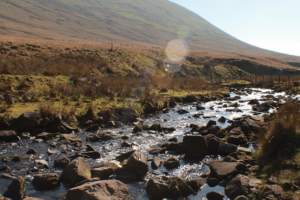Mastering Rodent Control Tucson: Strategizing Trap Placement in Catalina Foothills
Rodents thrive in Tucson's Catalina Foothills due to abundant food and water sources, diverse v…….

Rodents thrive in Tucson's Catalina Foothills due to abundant food and water sources, diverse vegetation, and suitable hiding spots. Effective rodent control requires strategic trap placement, particularly at night, near known pathways, nests, and water sources. Using a combination of snap traps, live traps, and baits, along with sealing entry points, is the best approach for Tucson residents. Regular maintenance ensures optimal results, addressing seasonal variations and local rodent behavior. For effective rodent control in Tucson, strategic trap placement, regular maintenance, and professional strategies are key.
Looking to tackle rodent control in the vibrant Catalina Foothills? This guide navigates the intricate dance between understanding local rodent behavior and effectively employing traps. Delve into learning about the types of rodent traps suitable for Tucson’s unique environment, from classic snap traps to more advanced options. Discover the art of strategically placing these devices for maximum impact, ensuring safety and success in your quest for rodent-free living in this bustling Arizona metropolis.
- Understanding Rodent Behavior in the Catalina Foothills
- Types of Rodent Traps and Their Effective Use
- Strategically Placing Traps for Maximum Impact in Tucson
Understanding Rodent Behavior in the Catalina Foothills

Rodents, such as mice and rats, are common pests in the Catalina Foothills area, driven largely by the region’s diverse vegetation and abundant food sources. Understanding their behavior is crucial for effective rodent control Tucson residents often seek. These creatures are most active during twilight hours, making nighttime the prime time to set traps. They also tend to follow water sources, so areas near streams or irrigation systems may warrant extra attention. Additionally, rodents are known to build nests in secluded, protected places like under debris, in hollow trees, or even within homes, highlighting the need for strategic trap placement.
Local conditions in the Catalina Foothills can influence rodent behavior. The region’s dry, arid climate attracts certain species more than others, and understanding these variations can help tailor rodent control methods accordingly. Residents should also be aware that rodents are social animals, living in colonies, which means a single trapped or killed rodent may prompt others to find new routes into homes or structures. This is why it’s important to use a combination of traps and baits, along with sealing entry points, for comprehensive rodent control Tucson environments demand.
Types of Rodent Traps and Their Effective Use

Rodent traps come in various types, each with its own advantages and is suited for different situations. For instance, snap traps are widely used for their simplicity and effectiveness in capturing rodents quickly. These traps use a spring-loaded mechanism to snap shut when triggered by the rodent. Live traps, on the other hand, allow captured animals to be released unharmed, making them ideal for areas where non-target species might be present. They encourage live capture and subsequent relocation instead of killing.
When deploying these traps in the Catalina Foothills region of Tucson, understanding the local rodent behavior is key to their effective use. Placement should consider common hiding spots like beneath debris, in hollows of trees, or along fences. Setting traps near visible signs of rodent activity increases success rates. Regularly checking and maintaining the traps is crucial for optimal results in rodent control Tucson, as it ensures they remain functional and reduces potential non-target catches.
Strategically Placing Traps for Maximum Impact in Tucson

In the fight against rodents, strategic placement of traps is key for effective rodent control Tucson residents rely on. The Catalina Foothills present unique challenges due to its diverse terrain and wildlife. For optimal results, place traps along common rodent pathways, such as near fences, under decking, or in areas with dense vegetation. These areas often serve as highways for rodents seeking food and shelter.
Additionally, consider the time of year. During winter, rodents seek warmer habitats, so placing traps closer to buildings and homes is strategic. In spring and summer, focus on exterior areas where you might find nests or burrows. Regularly checking and emptying traps ensures their continued effectiveness in maintaining rodent control Tucson’s residents expect.
When it comes to rodent control in Tucson, understanding local behavior and utilizing the right traps are key. By knowing where rodents are most active and choosing the appropriate trap type for each scenario, you can effectively manage infestations in the Catalina Foothills. Strategically placing these devices in hidden yet accessible areas will maximize their impact, ensuring a safer, more secure environment for residents. Remember, professional guidance is always beneficial for complex cases, but with this knowledge, you’re well-equipped to handle common rodent control challenges in Tucson.







